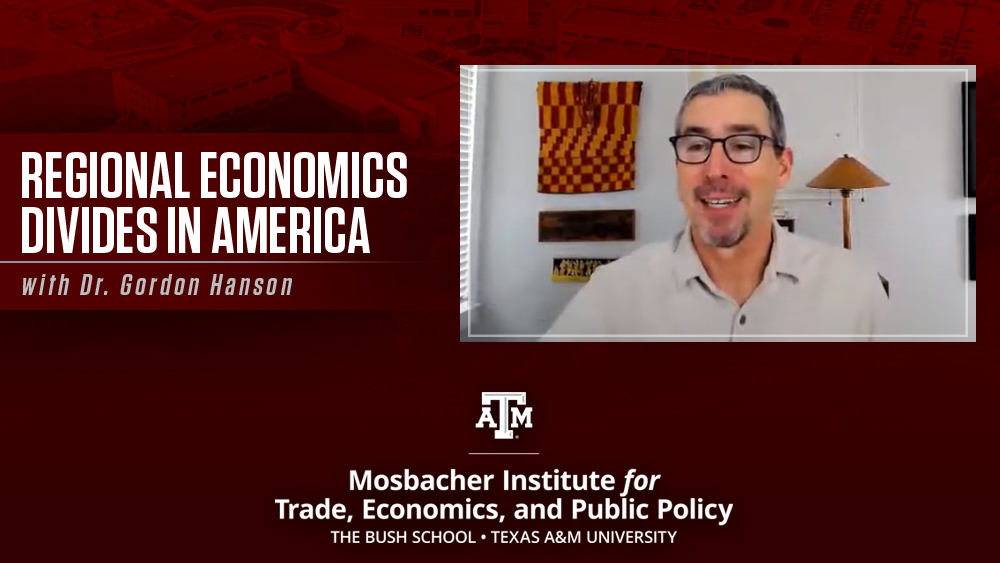
In a policy talk titled “Regional Economics Divides in America,” Dr. Gordon Hanson, a Professor in urban policy at the Harvard Kennedy School, spoke on March 25, 2021, about the economic differences that divide US communities and what can be done to close those divisions. The Zoom webinar was hosted by the Mosbacher Institute for Trade, Economics, and Public Policy at the Bush School of Government and Public Service.
Hanson spoke primarily about joblessness, saying that looking at the fraction of employed working-age adults tells us mostly what we need to know about the economic health of a place. He used two maps to illustrate the steep increase in the extent of unemployment today compared with 1980. Joblessness is significant because it is a sign that something is not working and correlates with other negative outcomes like separated families, lower wages, poorer health, and high opioid abuse. Hanson went on to list four causes: technological changes such as the automation of jobs, globalization and rising import competition from China, energy transformation like the decline of coal, and the long-term effects of recessions.
Technology and automation brought large laborsaving changes that also altered the nature of work. Middle-skill jobs, such as factory, clerical, administrative, and sales positions, disappeared, while low-skill jobs that paid substantially less, particularly for non-college-educated workers, were created. Manufacturing jobs allowed non-college-educated workers to earn middle-class incomes. The consequence of the loss of those jobs is wider income inequality, where more workers without a college education are stuck in low-wage positions, while high-wage positions are reserved for workers with college degrees.
The second contributing factor Hanson described is globalization and the impact of China’s drastic increase in the export of labor-intensive products, which created major competitive shocks in other global manufacturing companies. In response, US manufacturing declined, causing massive increases in joblessness in manufacturing communities. To the surprise of economists, displaced workers did not migrate in search of work. That joblessness among working-age adults led to social dislocation that hurt both workers and their communities.
Hanson explained that interventions to help distressed communities, such as tax incentives to attract large firms, historically do not work. He said what does work, and at much less cost than bribing Amazon to move to your town, is investing in the capabilities of local firms and providing worker training programs that target the needs of local employers. What may work is attracting college-educated workers and skilled immigrants to create a pool of high-skill workers who attract investments from firms because local companies are the engines of job growth.
During the question-and-answer portion of the talk, Hanson discussed the mobility characteristics of the American workforce, federal incentives like universal basic income, trade adjustment assistance, and the role of Mexico in US regional economic divides. When asked about which of the four factors had the greatest impact on the United States, Hanson explained that automation is the most significant because it affects all aspects of the economy but that trade and energy shocks contribute to more concentrated pockets of pain. The Bush School is thankful for the dynamic and engaging discussion with Hanson and looks forward to future policy discussions.
“Regional Economics Divides in America” can be viewed on the Bush School YouTube channel.
